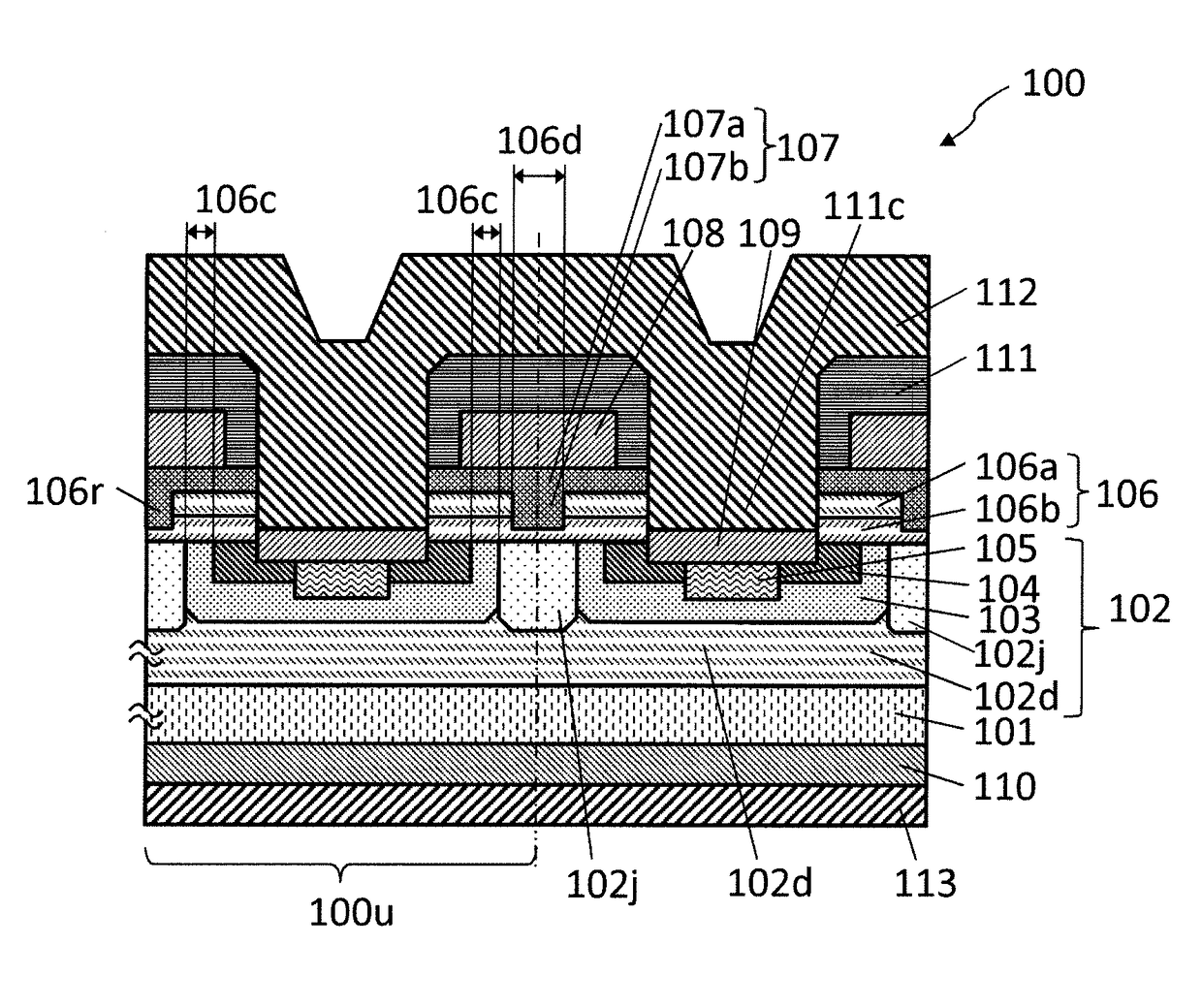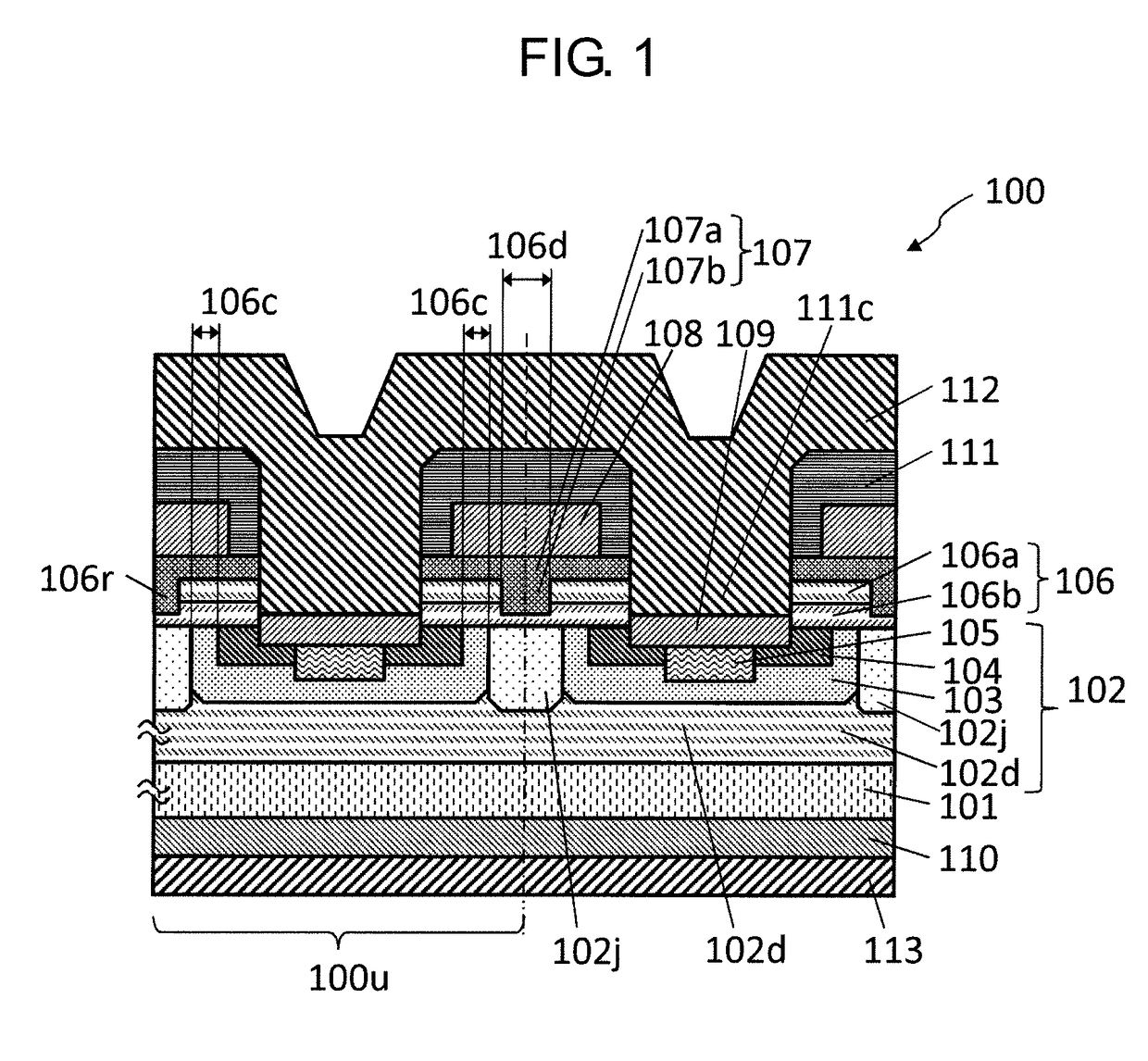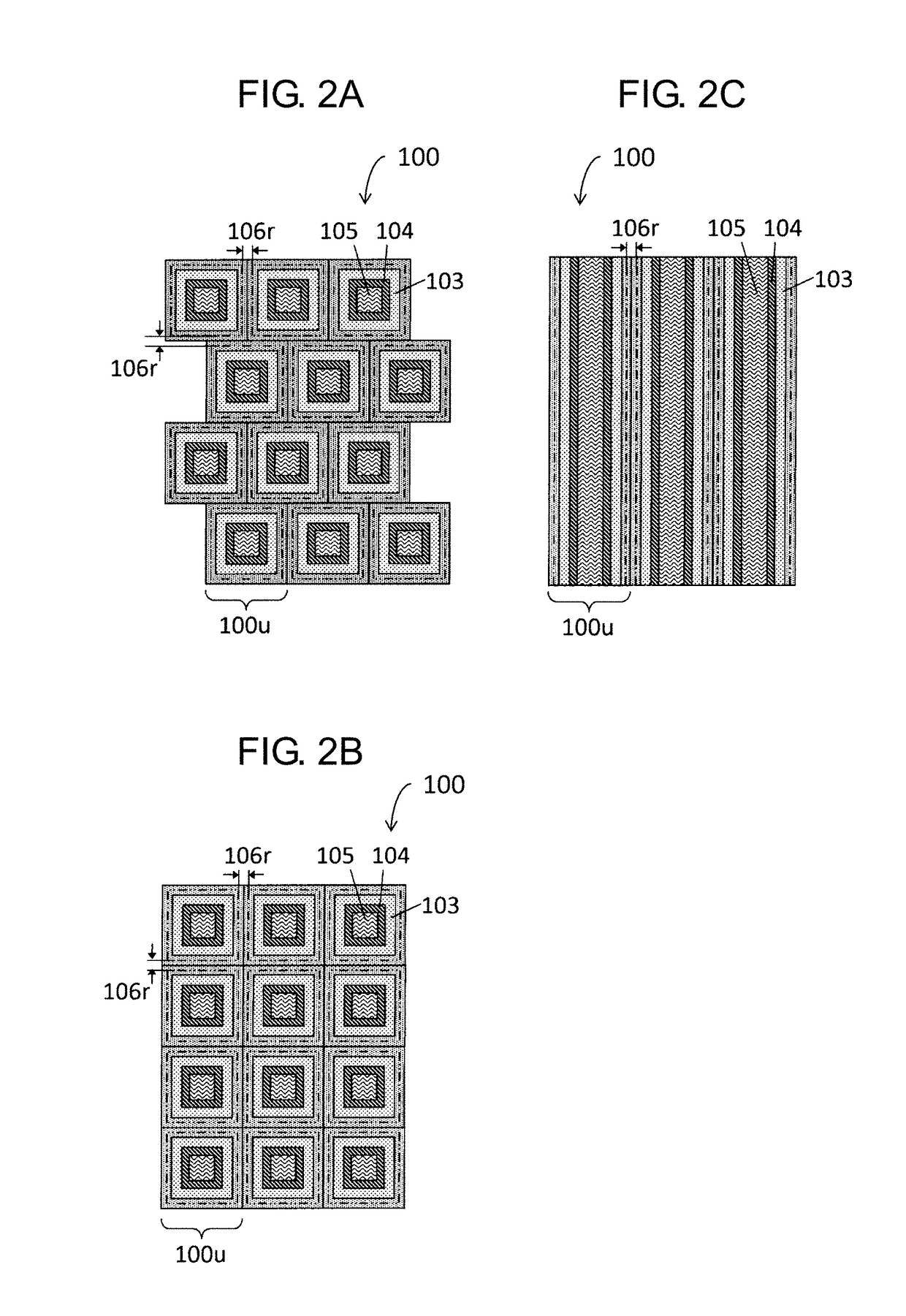Silicon carbide semiconductor element and method for manufacturing the same
a silicon carbide and semiconductor element technology, applied in the field of silicon carbide semiconductor elements, can solve the problem of reducing the cross-sectional area of the configuration, and achieve the effect of reducing the conduction loss and the switching loss
- Summary
- Abstract
- Description
- Claims
- Application Information
AI Technical Summary
Benefits of technology
Problems solved by technology
Method used
Image
Examples
first exemplary embodiment
[0048]A semiconductor element according to exemplary embodiments of the present disclosure, will be described below with reference to the drawings.
[0049]FIG. 1 schematically illustrates a cross-section of silicon carbide semiconductor element 100 according to a first exemplary embodiment. FIG. 1 is a schematic cross-sectional view of a vertical SiC-MOSFET in which two unit cells 100u are arranged side by side. Commercially available silicon carbide semiconductor element 100 includes a plurality of unit cells.
[0050](Configuration of Silicon Carbide Semiconductor Element 100)
[0051]Silicon carbide semiconductor element 100 includes semiconductor substrate 101 of a first conductivity type and first silicon carbide semiconductor layer (silicon carbide epitaxial layer) 102 of the first conductivity type located on a front surface of semiconductor substrate 101. In the present exemplary embodiment, the first conductivity type is an n type, and a second conductivity type is a p type. Howeve...
second exemplary embodiment
[0113]FIG. 8A schematically illustrates a cross-section of silicon carbide semiconductor element 200 according to the second exemplary embodiment. Silicon carbide semiconductor element 200 includes a plurality of unit cells 200u. In the present second exemplary embodiment, channel removed region106r is set to be deeper than the first exemplary embodiment. Specifically, while channel removed region 106r in the first exemplary embodiment is a cutout of second silicon carbide semiconductor layer 106, channel removed region 106r in the present second exemplary embodiment includes not only the cutout of second silicon carbide semiconductor layer 106 but also a cutout of JFET region 102j. The cutout of JFET region 102j is extended from the upper surface of JFET region 102j, and is spatially continuous with the cutout of second silicon carbide semiconductor layer 106. Note that the processes other than the channel removing process are similar to those in the first exemplary embodiment. As ...
PUM
| Property | Measurement | Unit |
|---|---|---|
| width | aaaaa | aaaaa |
| width | aaaaa | aaaaa |
| on resistance | aaaaa | aaaaa |
Abstract
Description
Claims
Application Information
 Login to View More
Login to View More - R&D
- Intellectual Property
- Life Sciences
- Materials
- Tech Scout
- Unparalleled Data Quality
- Higher Quality Content
- 60% Fewer Hallucinations
Browse by: Latest US Patents, China's latest patents, Technical Efficacy Thesaurus, Application Domain, Technology Topic, Popular Technical Reports.
© 2025 PatSnap. All rights reserved.Legal|Privacy policy|Modern Slavery Act Transparency Statement|Sitemap|About US| Contact US: help@patsnap.com



